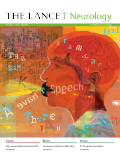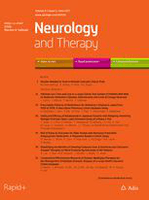
Journal of Movement Disorders
Scope & Guideline
Transforming insights into action for movement disorders.
Introduction
Aims and Scopes
- Understanding Movement Disorders:
The journal emphasizes the exploration of various movement disorders, including Parkinson's disease, dystonia, Huntington's disease, and others, with a focus on their pathophysiology, clinical manifestations, and progression. - Therapeutic Innovations:
A significant aim is to evaluate and report on the effectiveness of novel therapeutic strategies, including pharmacological treatments, deep brain stimulation, and emerging therapies such as gene therapy and telehealth interventions. - Genetic and Biomarker Research:
The journal promotes research into genetic variants associated with movement disorders and the identification of biomarkers that can aid in diagnosis and treatment efficacy, particularly in conditions like Parkinson's disease and dystonia. - Interdisciplinary Approach to Care:
There is a consistent focus on integrating neurological, psychological, and rehabilitative perspectives in managing movement disorders, highlighting the importance of a multidisciplinary approach in treatment. - Patient and Caregiver Perspectives:
Research often includes the experiences and perceptions of patients and caregivers, exploring quality of life, knowledge gaps, and attitudes towards treatment options.
Trending and Emerging
- Telemedicine and Remote Care:
There is a notable increase in studies focusing on telemedicine for managing movement disorders, especially highlighted by the COVID-19 pandemic. This trend emphasizes the need for accessible care and innovative solutions for patient management. - Interdisciplinary Management of Non-Motor Symptoms:
Research is increasingly addressing non-motor symptoms associated with movement disorders, such as cognitive impairment and psychosocial aspects, indicating a broader understanding of the patient experience. - Impact of Environmental Factors:
Emerging studies are investigating the role of environmental influences, such as air pollution, on the incidence and progression of movement disorders, suggesting a growing recognition of external factors in disease etiology. - Innovations in Biomarker Research:
There is a surge in interest in identifying and validating biomarkers for early diagnosis and monitoring of disease progression, particularly in Parkinson's disease, reflecting advancements in genetic and proteomic technologies. - Patient-Centered Outcomes and Quality of Life:
Recent publications are increasingly emphasizing the importance of patient-reported outcomes and quality of life assessments, underscoring a shift towards more holistic approaches to treatment and care.
Declining or Waning
- Traditional Pharmacological Approaches:
There seems to be a waning interest in reporting on traditional pharmacological treatments alone, as newer interventions and multidisciplinary approaches gain prominence in the literature. - Purely Clinical Case Reports:
The journal is increasingly favoring studies that incorporate broader research methodologies, such as cohort studies and systematic reviews, leading to a decline in purely anecdotal clinical case reports. - Basic Science Research:
While foundational research is crucial, there appears to be a decrease in studies focusing solely on basic science without clinical application, as the journal shifts towards translational research that bridges laboratory findings with clinical practice.
Similar Journals

Neurology Research International
Elevating Knowledge in Neurological ScienceNeurology Research International, published by HINDAWI LTD, is an esteemed open access journal that has been serving the neurology community since 2010. With its ISSN 2090-1852 and E-ISSN 2090-1860, this journal aims to foster knowledge dissemination and facilitate dialogue surrounding key issues in neurology and clinical neuroscience, making it a vital resource for researchers, clinicians, and students alike. It operates from the United States, with its administrative hub located in London, England. As of 2023, the journal has been positioned in the Q3 category for both neurology and clinical neurology, reflecting its commitment to advancing research within these critical fields. With a current Scopus rank of #216/400 in clinical neurology and a #113/192 in neuroscience, and a converged publication timeline from 2010 to 2024, Neurology Research International is dedicated to promoting high-quality research that addresses contemporary challenges and innovations in neurological science. By offering open access since its inception, it ensures that cutting-edge research is freely available, aligning with the global push towards accessible scientific communication.

METABOLIC BRAIN DISEASE
Exploring the intersection of biochemistry and neurology.METABOLIC BRAIN DISEASE, published by SPRINGER/PLENUM PUBLISHERS, is a leading journal dedicated to advancing our understanding of the metabolic processes impacting brain health and disease. Established in 1986 and set to continue until 2024, this journal encompasses a wide range of interdisciplinary research that intersects the fields of Biochemistry, Cellular and Molecular Neuroscience, and Neurology, as evidenced by its notable quartile placements in Q2 and Q3 for 2023. With an ISSN of 0885-7490 and an E-ISSN of 1573-7365, it serves as a vital resource for researchers and practitioners aiming to deepen their insights into cerebral metabolic disorders and their implications. Although currently not an Open Access option, its rigorous peer-review process ensures that high-quality, impactful research reaches its audience. Showcasing a significant rank within the top percentile of its categories, METABOLIC BRAIN DISEASE is instrumental in shaping the future of neurological research and clinical applications.

Neurologia i Neurochirurgia Polska
Enhancing Knowledge, Enriching LivesNeurologia i Neurochirurgia Polska is a prestigious Polish journal dedicated to advancements in the fields of neurology and neurosurgery, published by VIA MEDICA. With a rich history dating back to 1967, this journal serves as a critical platform for disseminating significant research findings and clinical practices that advance our understanding of neurological disorders and surgical interventions. Registered under ISSN 0028-3843 and E-ISSN 1897-4260, it boasts commendable rankings as reflected in its 2023 categorical quartiles: Q3 in Neurology (Clinical) and Q2 in Surgery, indicating its substantial impact within these domains. Furthermore, its Scopus rankings reveal that it is positioned at Rank #125/551 within Medicine-Surgery and Rank #187/400 in Medicine-Neurology (Clinical), showcasing its importance in academic and clinical circles. Although not currently open access, the journal remains accessible to readers and practitioners who seek to stay updated on innovative research and methodologies. The journal’s objective is to foster knowledge exchange and stimulate scientific dialogue among researchers, professionals, and students, thus shaping the future of neurology and neurosurgery in Poland and beyond. Located at UL SWIETOKRZYSKA 73, 80-180 GDANSK, POLAND, it invites contributions that inspire and elevate the standards of medical practice.

LANCET NEUROLOGY
Your Gateway to Neurology's Cutting EdgeThe Lancet Neurology is a premier academic journal published by Elsevier Science Inc, specializing in the field of neurology. With a robust impact factor that signifies its authoritative presence, it consistently ranks in the Q1 category for clinical neurology according to the 2023 standards, positioning itself as the leading journal in its domain, ranking #1 out of 400 in Scopus' neurology rankings and placing in the 99th percentile. Since its establishment in 2002, it has provided a vital platform for disseminating innovative research and clinical advances related to neurological disorders. The journal’s precise focus includes cutting-edge studies on neurodegenerative diseases, stroke, epilepsy, and neuroimaging, which are essential for advancing clinical practice and improving patient outcomes. While it does not offer open access, readers can find high-impact research published monthly, making it indispensable for practitioners, researchers, and students eager to stay at the forefront of neurological science.

JOURNAL OF GERIATRIC PSYCHIATRY AND NEUROLOGY
Fostering understanding of mental health in the elderly.JOURNAL OF GERIATRIC PSYCHIATRY AND NEUROLOGY, published by SAGE PUBLICATIONS INC, is a premier academic journal dedicated to advancing the understanding of mental health issues and neurological disorders in the aging population. With an established presence since 1988, this journal stands out in the fields of Geriatrics, Gerontology, Neurology, and Psychiatry, currently positioned in the Q2 category based on 2023 metrics, reflecting its influence and academic rigor. The journal is indexed in major databases and is highly regarded for its contributions, as evidenced by its strong Scopus rankings. It serves as an essential resource for researchers, clinicians, and students, offering insightful articles that explore the complex interplay between aging, mental health, and neurological conditions. Although it does not provide open access, it continues to be a vital source of scholarly knowledge for those dedicated to enhancing the well-being of the elderly population.

CURRENT OPINION IN NEUROLOGY
Uncovering Breakthroughs in Neurological Research.CURRENT OPINION IN NEUROLOGY is a premier academic journal dedicated to providing insightful overviews and critical analyses across all areas of neurology and clinical neurology. Published by Lippincott Williams & Wilkins, this esteemed journal boasts an impressive impact factor, highlighting its influence and relevance in the field—positioning it in the Q1 category for both neurology and clinical neurology as of 2023. With its comprehensive coverage, the journal serves as a vital resource for researchers, healthcare professionals, and students aiming to stay abreast of the latest developments, trends, and breakthroughs in neurological science and practice. Though not open access, articles are available via institutional subscriptions or individual purchase, ensuring that vital research remains accessible to a wide audience. Covering research from its inception in 1993 to ongoing studies in 2024, CURRENT OPINION IN NEUROLOGY stands out as an essential platform for disseminating knowledge and fostering dialogue within the dynamic and evolving landscape of neurology.

NEUROLOGICAL SCIENCES
Connecting minds to enhance patient outcomes in neurology.NEUROLOGICAL SCIENCES, published by SPRINGER-VERLAG ITALIA SRL, is a premier journal that has been a cornerstone in the field of neurology and related disciplines since its inception in 1996. With an impressive Q1 ranking in Dermatology and Q2 rankings in Neuroloy (clinical) as well as Psychiatry and Mental Health, this journal consistently delivers high-quality peer-reviewed research that informs and shapes clinical practice. The journal boasts a significant presence on Scopus, positioned in the 89th percentile for Dermatology, 73rd for Psychiatry and Mental Health, and 72nd for Neurology (clinical), reflecting its influential contributions to medical knowledge. Open Access options are available, ensuring that this valuable research is accessible to a wider audience committed to advancing their understanding of neurological sciences. As it converges into future years (2024 and beyond), NEUROLOGICAL SCIENCES aims to continue foster collaboration and innovation amongst researchers, professionals, and students within the neurology and mental health domains, making it an indispensable resource for those dedicated to improving patient outcomes and advancing scholarly dialogue.

Neurology and Therapy
Advancing Neurological Health Through Open Access ResearchNeurology and Therapy, published by SPRINGER LONDON LTD, stands as a pivotal platform for researchers and practitioners in the field of neurology and its therapeutic applications. This Open Access journal, active since 2012, facilitates the dissemination of innovative studies and cutting-edge findings aimed at improving neurological health. With an impressive ranking in the 2023 Scopus Rankings, where it holds a Q2 category in Neurology and a Q1 category in Clinical Neurology, it underscores its prominence in advancing neurological research. The journal's intriguing scope encompasses a wide-ranging exploration of neurological disorders, treatment methodologies, and healthcare strategies, making it a valuable resource for those vested in enhancing patient outcomes. With an appealing average impact factor, readers are encouraged to dive into the latest advancements and engage with the scholarly discussions that are shaping the future of neurology.

Neurodegenerative Diseases
Unraveling the complexities of neurodegeneration.Neurodegenerative Diseases, published by KARGER, is a prominent academic journal dedicated to advancing the field of neurology and neuroscience. With an ISSN of 1660-2854 and E-ISSN 1660-2862, this journal serves as a vital platform for researchers, professionals, and students engaged in the exploration of neurodegenerative disorders from various perspectives, including clinical applications and therapeutic interventions. Spanning two decades since its inception in 2004 and set to converge in 2024, it has steadily built a reputation within the academic community, achieving a commendable Q2 ranking in clinical neurology and Q3 in general neurology according to the 2023 category quartiles. The journal boasts an impressive Scopus rank of 114/400 (71st percentile) in clinical neurology and 58/192 (70th percentile) in neuroscience neurology. While not classified as open access, the publication provides critical insights into the latest research and developments, making it an essential resource for anyone dedicated to understanding and combating neurodegenerative diseases.

NEUROMUSCULAR DISORDERS
Leading the way in pediatric neuromuscular research.NEUROMUSCULAR DISORDERS is a premier academic journal published by PERGAMON-ELSEVIER SCIENCE LTD, focusing on the latest research and developments in the fields of neurology, genetics, and pediatric health. With an ISSN of 0960-8966 and an E-ISSN of 1873-2364, this journal has established a significant presence since its inception in 1991, and it continues to contribute to the scientific community with its impactful findings and reviews. The journal boasts a commendable impact factor, reflected in its placement in the Q2 category for Clinical Genetics and Neurology, as well as its positioning in the top tier Q1 for Pediatrics, Perinatology and Child Health according to the latest quartile assessments. With Scopus rankings such as Rank #71/330 in Pediatrics and Rank #51/99 in Clinical Genetics, NEUROMUSCULAR DISORDERS is recognized for its contribution to advancing knowledge in neuromuscular diseases. The journal is essential for researchers, clinicians, and students interested in the intricate relationship between genetics and neurological disorders, providing valuable insights that drive innovation and improve patient care.